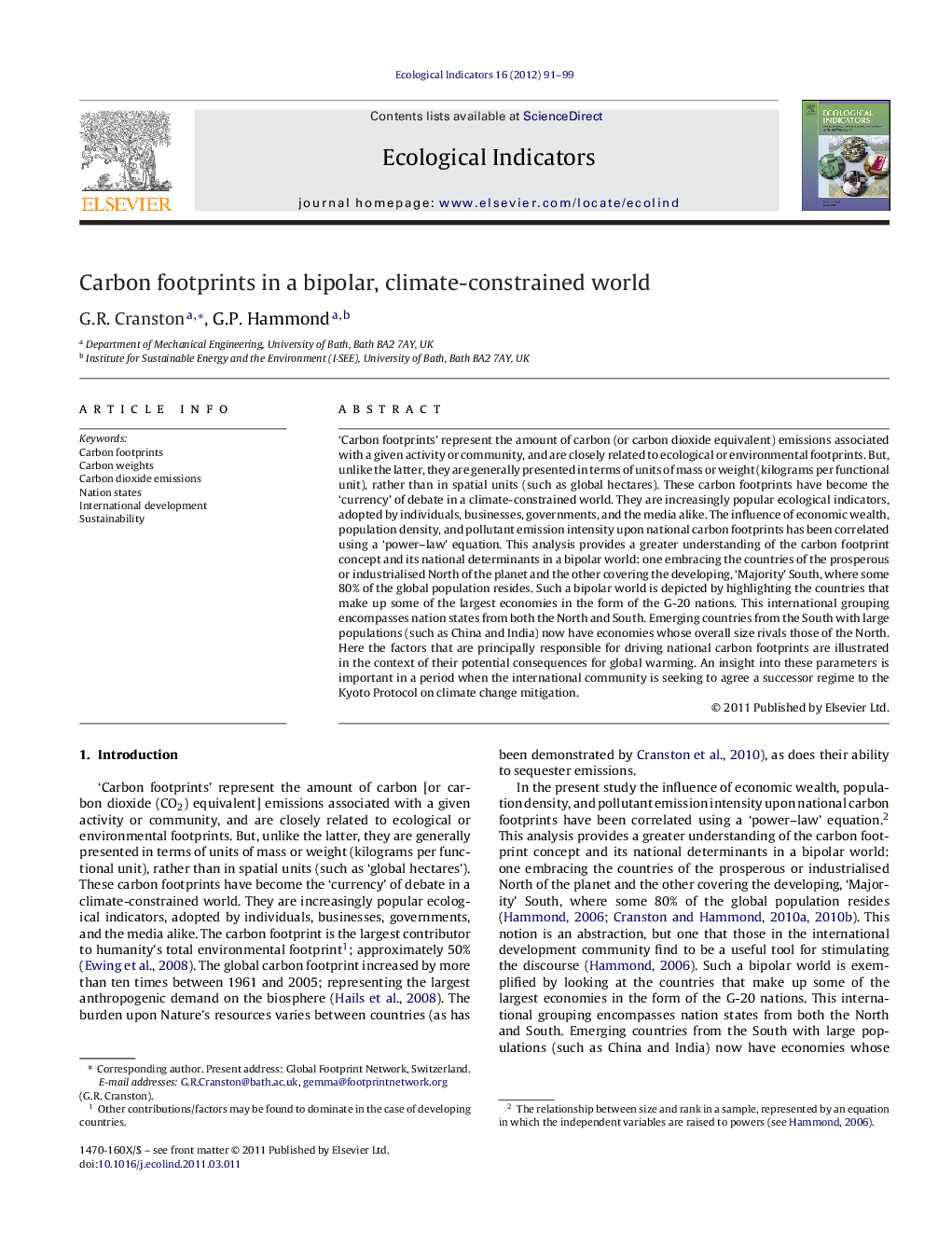| کد مقاله | کد نشریه | سال انتشار | مقاله انگلیسی | نسخه تمام متن |
|---|---|---|---|---|
| 4373955 | 1617184 | 2012 | 9 صفحه PDF | دانلود رایگان |

‘Carbon footprints’ represent the amount of carbon (or carbon dioxide equivalent) emissions associated with a given activity or community, and are closely related to ecological or environmental footprints. But, unlike the latter, they are generally presented in terms of units of mass or weight (kilograms per functional unit), rather than in spatial units (such as global hectares). These carbon footprints have become the ‘currency’ of debate in a climate-constrained world. They are increasingly popular ecological indicators, adopted by individuals, businesses, governments, and the media alike. The influence of economic wealth, population density, and pollutant emission intensity upon national carbon footprints has been correlated using a ‘power–law’ equation. This analysis provides a greater understanding of the carbon footprint concept and its national determinants in a bipolar world: one embracing the countries of the prosperous or industrialised North of the planet and the other covering the developing, ‘Majority’ South, where some 80% of the global population resides. Such a bipolar world is depicted by highlighting the countries that make up some of the largest economies in the form of the G-20 nations. This international grouping encompasses nation states from both the North and South. Emerging countries from the South with large populations (such as China and India) now have economies whose overall size rivals those of the North. Here the factors that are principally responsible for driving national carbon footprints are illustrated in the context of their potential consequences for global warming. An insight into these parameters is important in a period when the international community is seeking to agree a successor regime to the Kyoto Protocol on climate change mitigation.
Journal: Ecological Indicators - Volume 16, May 2012, Pages 91–99